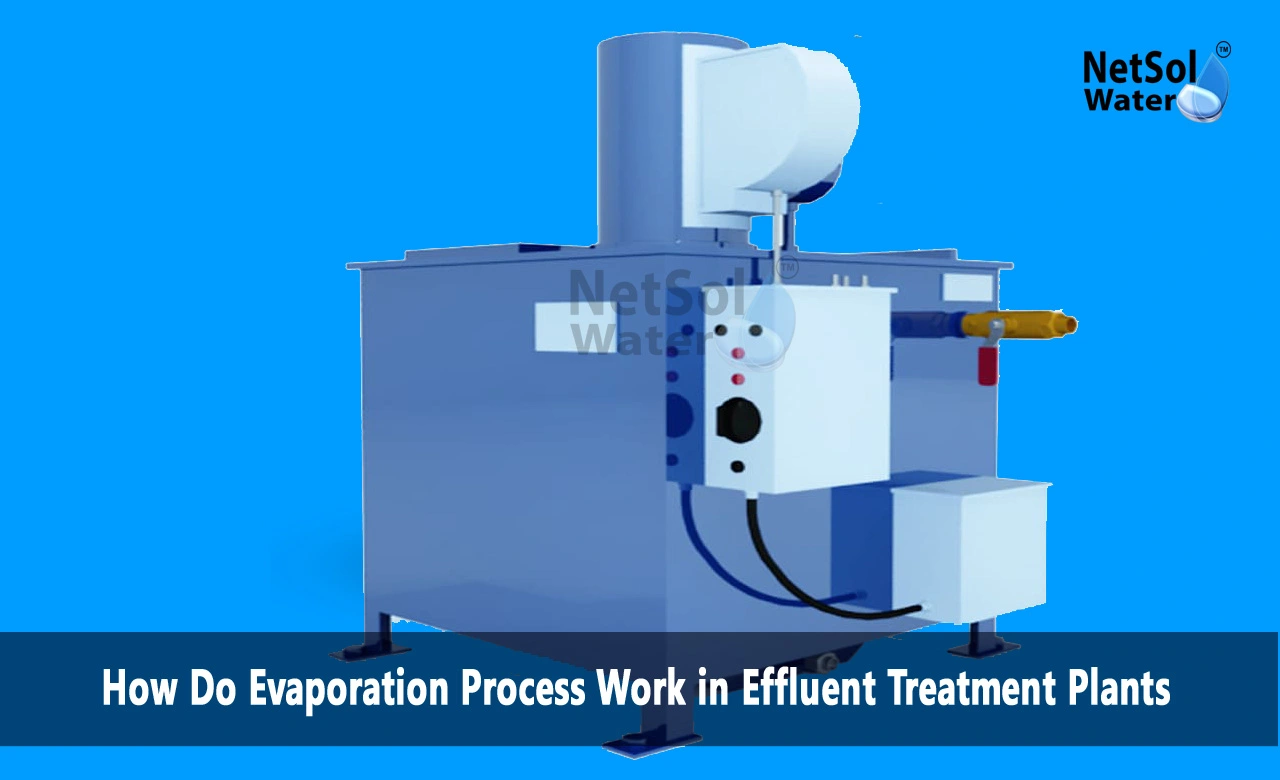How Do Evaporation Process Work in Effluent Treatment Plants?
In effluent treatment, various processes are employed to remove contaminants and impurities from wastewater before it is discharged or reused. Among these processes, evaporation techniques have emerged as a highly effective and versatile solution. We will explore how evaporation processes work in effluent treatment plants and their role in achieving environmental compliance.
Understanding Evaporation Processes
Evaporation is a natural phenomenon that involves the conversion of a liquid into a gaseous state. In the context of effluent treatment, evaporation processes are designed to separate water from dissolved solids, suspended solids, and other contaminants present in the wastewater.These processes typically involve the application of heat, which causes the water in the effluent to evaporate, leaving behind a concentrated solution or solid residue containing the contaminants. The resulting water vapour can then be condensed and collected as purified water, while the concentrated waste stream can be managed separately.
Types of Evaporation Processes in Effluent Treatment Plant
Several evaporation processes are commonly used in effluent treatment plants, each with its unique characteristics and applications:
1. Evaporative Crystallizers: These systems use heat to evaporate water from the effluent, resulting in the formation of solid crystals or salts. The crystals can then be separated and disposed of while the purified water vapour is collected and condensed.
2. Thermal Evaporators: Thermal evaporators utilise direct or indirect heating methods to evaporate the water from the effluent. They can be designed as single-effect or multi-effect systems, with the latter being more energy-efficient.
3. Membrane Distillation: This process combines membrane technology with evaporation. The effluent is heated, causing the water to evaporate and pass through a hydrophobic (water-repelling) membrane, leaving the contaminants behind.
4. Solar Evaporation Ponds: These are large, shallow ponds where the effluent is exposed to direct sunlight, allowing the water to evaporate naturally. The concentrated waste stream is left behind in the ponds and can be managed accordingly.
Benefits of Evaporation Processes in Effluent Treatment
Evaporation processes offer several benefits in the context of effluent treatment:
1. Effective Contaminant Removal: These processes can effectively remove a wide range of contaminants, including dissolved solids, suspended solids, heavy metals, and organic compounds, making them suitable for various types of effluents.
2. High-Quality Distillate Production: The water vapour produced during evaporation can be condensed to produce high-quality distillate or purified water, which can be reused or discharged safely.
3. Reduced Waste Volume: By separating the water from the contaminants, evaporation processes can significantly reduce the volume of waste that needs to be managed, lowering disposal costs and environmental impact.
4. Versatility: Evaporation processes can be adapted to handle various effluent compositions and flow rates, making them suitable for different industrial and municipal applications.
5. Environmental Compliance: Properly designed and operated evaporation systems can help effluent treatment plants meet stringent environmental regulations for discharge or reuse.
Factors Influencing Evaporation Process Efficiency
The efficiency and effectiveness of evaporation processes in effluent treatment can be influenced by several factors, including:
1. Effluent Characteristics: The composition of the effluent, including the concentration and types of contaminants present, can impact the evaporation process and the design of the system.
2. Energy Requirements: Evaporation processes often require substantial energy input, particularly for thermal evaporators and membrane distillation systems. Optimising energy efficiency is crucial for cost-effectiveness and sustainability.
3. Scaling and Fouling: The formation of scale or fouling on heat transfer surfaces and membranes can reduce the efficiency of evaporation processes, necessitating proper pretreatment and maintenance.
4. System Design: Proper system design, including the selection of appropriate materials, heat transfer mechanisms, and condensation techniques, plays a crucial role in maximizing evaporation efficiency.
5. Operational Parameters: Factors such as temperature, pressure, flow rates, and residence time can significantly impact the performance of evaporation processes and must be carefully controlled.
Best Practices for Evaporation Processes in Effluent Treatment
To maximise the benefits and efficiency of evaporation processes in effluent treatment plants, the following best practices should be considered:
1. Comprehensive Effluent Characterization: Conduct a thorough analysis of the effluent composition to guide the selection and design of the appropriate evaporation process.
2. Energy Optimization: Explore opportunities for energy recovery and integration to improve the overall energy efficiency of the evaporation system.
3. Pretreatment and Scaling Control: Implement effective pretreatment measures and scaling control strategies to minimise fouling and scaling on heat transfer surfaces and membranes.
4. System Design and Integration: Design the evaporation system to seamlessly integrate with other treatment processes, ensuring optimal performance and flexibility.
5. Monitoring and Control: Implement robust monitoring and control systems to track key parameters and optimise operational conditions for efficient evaporation.
6. Operator Training and Maintenance: Provide comprehensive training for operators and establish regular maintenance protocols to ensure consistent performance and longevity of the evaporation system.
7. Residual Management: Develop efficient strategies for managing the concentrated waste stream or solid residues generated during the evaporation process, ensuring proper disposal or further treatment.
Conclusion
Evaporation processes offer a powerful solution for effluent treatment, enabling the effective removal of contaminants and the production of high-quality purified water. By leveraging the principles of evaporation, these processes can address various types of effluents and support environmental compliance.While evaporation techniques offer numerous benefits, their efficiency and effectiveness are influenced by factors such as effluent characteristics, energy requirements, scaling and fouling, system design, and operational parameters. By adhering to best practices, including comprehensive effluent characterisation, energy optimisation, pretreatment and scaling control, and robust monitoring and control systems, effluent treatment plants can unlock the full potential of evaporation processes.
To explore customised commercial RO plants, Industrial RO plants, ETP or STP solutions for your needs in your areas and nearby regions, contact Netsol Water at:
Phone: +91-965-060-8473, Email: enquiry@netsolwater.com



